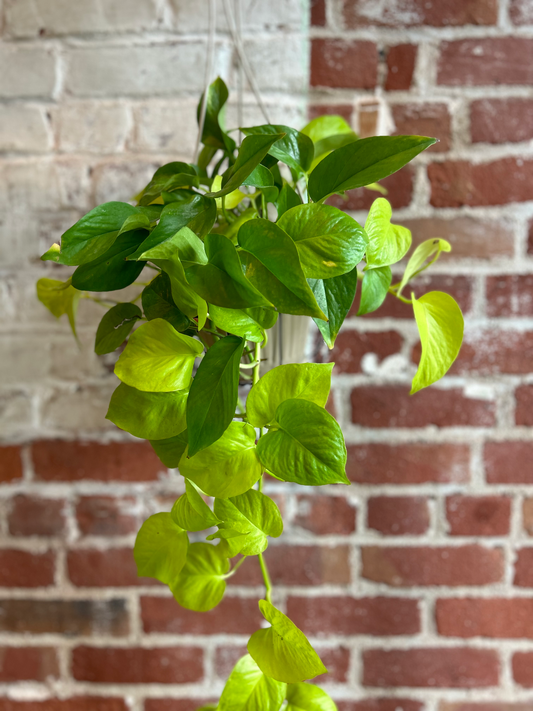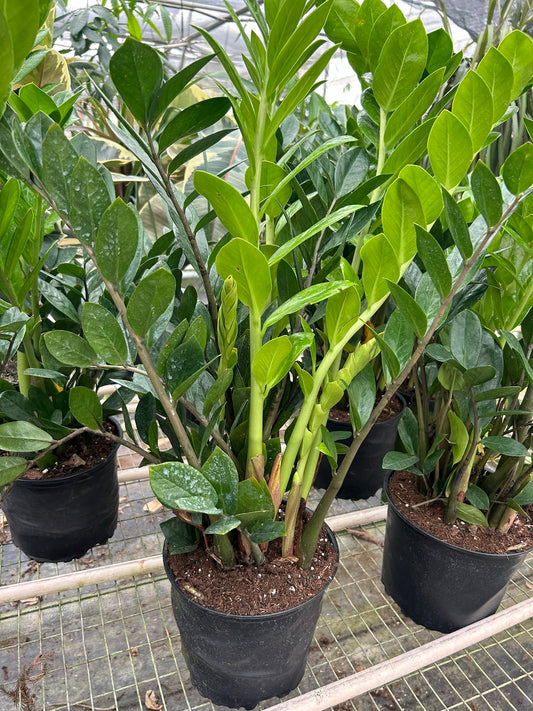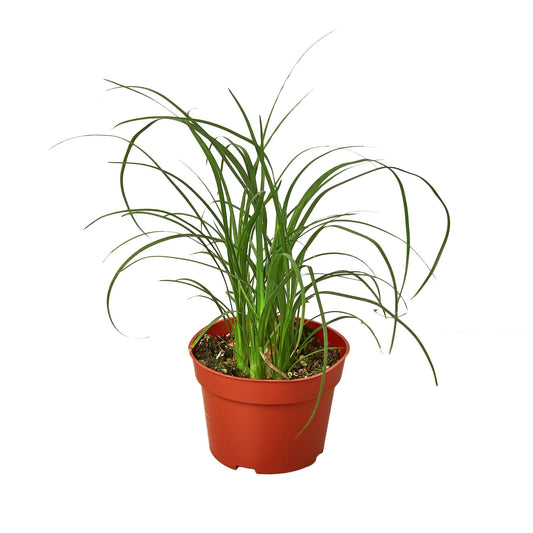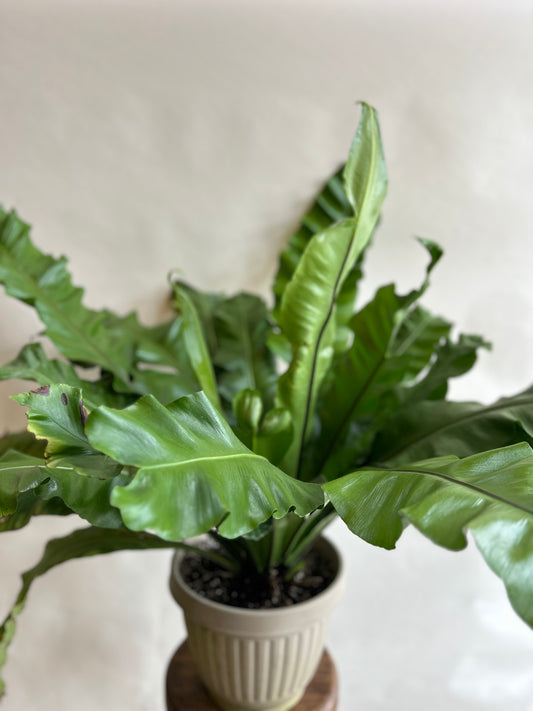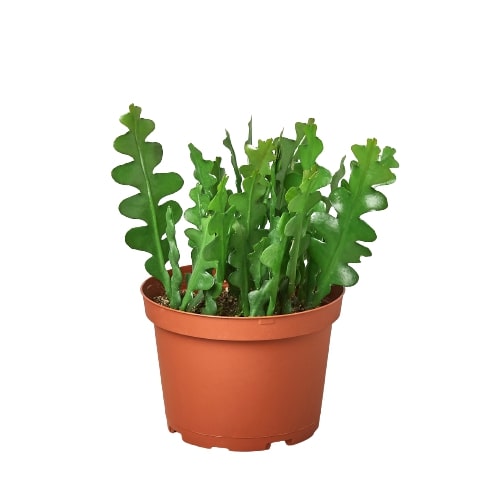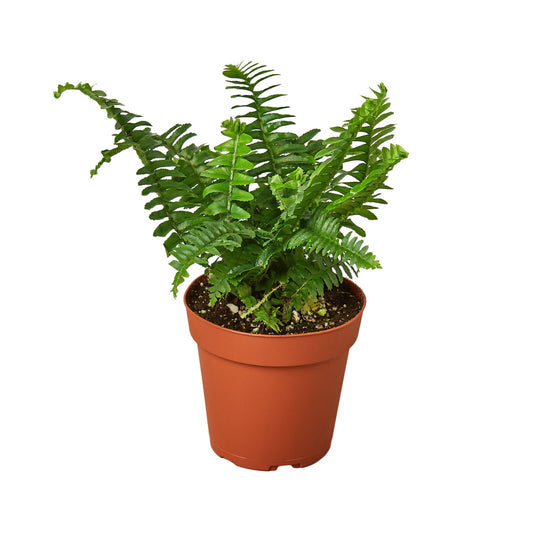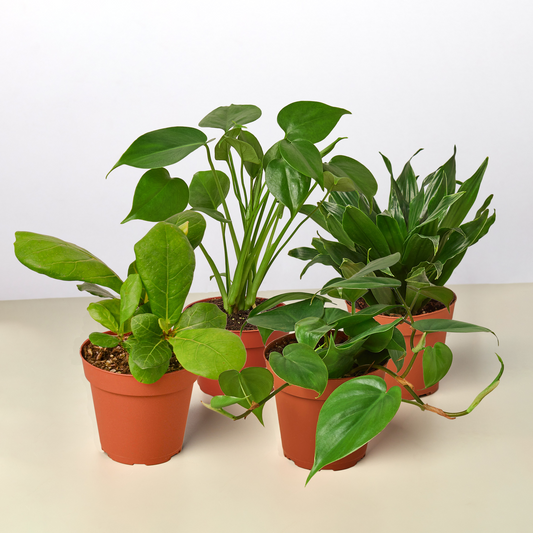The Lifespan Of Bonnie Spider Plants: How Long Do They Live?
Cafe Planta Team
Bonnie Spider Plants, with their charming curly leaves and easy-going nature, are beloved houseplants for many. But how long can you expect these green companions to stick around? The lifespan of a Bonnie Spider Plant is influenced by various factors, including care habits and environmental conditions.
In this article, we'll explore the typical lifespan of Bonnie Spider Plants and examine the factors that contribute to their longevity. We'll also share tips for keeping them healthy and thriving, ensuring they remain a vibrant part of your indoor garden for years to come.
Understanding the Bonnie Spider Plant
Let's start with the basics. The Bonnie Spider Plant, a variation of the classic Spider Plant, is distinguished by its curly leaves. This plant is a member of the Chlorophytum comosum family, widely known for its air-purifying capabilities. If you're new to plant care, Bonnie Spider Plants are a great choice as they are forgiving and adaptable.
These plants are native to coastal regions of South Africa, which means they're accustomed to warm, humid environments. Despite this, they have a robust nature that allows them to thrive in a variety of indoor settings. Their popularity can be attributed to their resilience and the aesthetically pleasing cascading foliage they produce.
Bonnie Spider Plants can survive in low-light conditions and are not too picky about humidity levels, making them perfect for almost any room in your home. However, to ensure they live to their full potential, a little extra care goes a long way.
The Typical Lifespan of Bonnie Spider Plants
On average, a Bonnie Spider Plant can live anywhere from 20 to 50 years. Yes, that's quite a range! The wide lifespan is due to the varying conditions in which they are kept and the care they receive. With proper attention, these plants can become a long-standing member of your household.
Like humans, plants have life stages. Bonnie Spider Plants start as young pups, mature into full-grown plants, and eventually produce their own offshoots, or "pups." These pups can be replanted to create new plants, effectively extending the life of the original plant through its progeny.
While they can live for decades, the key to a long life lies in consistent care. Regular watering, appropriate lighting, and occasional fertilization all play crucial roles in ensuring your Bonnie Spider Plant lives a long, healthy life.
Factors Affecting Longevity
The lifespan of a Bonnie Spider Plant depends on several factors. Let's take a closer look at what influences their longevity:
- Light: While they can tolerate low light, Bonnie Spider Plants thrive in bright, indirect sunlight. Too much direct sunlight can scorch their leaves, while too little light can stunt their growth.
- Watering: Overwatering is a common mistake. These plants prefer their soil to dry out between waterings. On the flip side, underwatering can lead to dehydration and brown tips.
- Soil: A well-draining potting mix is essential. Soil that retains too much moisture can lead to root rot, a deadly issue for many houseplants.
- Humidity: While not overly fussy about humidity, a slightly humid environment mimics their natural habitat and can help them thrive.
- Fertilization: Feeding your plant with a balanced liquid fertilizer during the growing season can promote growth and vitality.
By carefully managing these factors, you can provide the best environment for your Bonnie Spider Plant to thrive and live a long, healthy life.
Common Care Mistakes to Avoid
Even the most seasoned plant lovers make mistakes. Here are some common pitfalls to avoid when caring for your Bonnie Spider Plant:
Overwatering
It's easy to overestimate how much water your plant needs. Remember, it's better to underwater than overwater. Check the soil moisture before watering by sticking your finger about an inch into the soil. If it's dry, it's time to water; if not, give it a few more days.
Insufficient Light
While Bonnie Spider Plants are tolerant of low light, they do best in bright, indirect light. Try placing them near a window where they can get plenty of filtered sunlight. If you notice your plant looking a bit pale or leggy, it might need more light.
Poor Soil Quality
Using the wrong type of soil can hinder your plant's growth. A standard potting mix with good drainage is ideal. You can amend your soil with perlite or sand to improve aeration and drainage.
Avoid these common mistakes, and you'll find your Bonnie Spider Plant thriving in no time.
Repotting and Propagation
Repotting and propagation are essential practices for maintaining the health and lifespan of your Bonnie Spider Plant. Here's how to go about it:
Repotting
Bonnie Spider Plants prefer to be slightly root-bound, but they do need repotting every couple of years. Signs that it's time to repot include roots growing out of the drainage holes or a noticeable slowdown in growth.
When repotting, choose a pot that's one size larger than the current one. Carefully remove the plant from its pot, gently shake off excess soil, and place it in the new pot with fresh potting mix. Water thoroughly and place it back in its usual spot.
Propagation
Propagating your Bonnie Spider Plant is a simple way to grow new plants. The plantlets or "pups" that develop on the ends of the long stems can be rooted in water or soil. Simply cut the pup from the stem and place it in a small pot with moist soil or a glass of water. Once the roots have developed, you can pot them in soil to grow a new plant.
Regular repotting and propagation can keep your plant healthy and extend its lifespan significantly.
Dealing with Pests and Diseases
Like all plants, Bonnie Spider Plants can be susceptible to pests and diseases. Here's how to handle the most common issues:
Pests
Spider mites, aphids, and mealybugs are the usual suspects. They can be managed with regular checks and prompt action. Wipe leaves with a damp cloth to remove pests or use insecticidal soap for more severe infestations.
Disease
Root rot is a common disease caused by overwatering. To prevent it, ensure your pot has good drainage and your plant isn't left sitting in water. If you suspect root rot, remove the plant from its pot, trim any rotten roots, and repot in fresh soil.
With vigilant care, you can keep pests and diseases at bay, ensuring your plant remains healthy and vibrant.
Integrating Bonnie Spider Plants in Home Decor
Beyond their easy care and air-purifying qualities, Bonnie Spider Plants are also a beautiful addition to home decor. Their cascading leaves add a touch of elegance to any space.
Consider placing them in hanging baskets or on shelves where their leaves can drape down beautifully. They're also great for adding a pop of green to bathrooms, kitchens, or entryways.
If you're feeling creative, group several Bonnie Spider Plants together with other houseplants for a lush, layered look. Their vibrant green leaves complement a variety of other plants, making them a versatile choice for any plant collection.
Seasonal Care Tips
Caring for your Bonnie Spider Plant can vary slightly with the seasons. Here's a seasonal care guide to keep your plant happy year-round:
Spring and Summer
This is the active growing season for your plant. During these months, water more frequently and consider fertilizing every four to six weeks with a balanced liquid fertilizer. Ensure they have plenty of indirect light to support their growth.
Fall and Winter
As growth slows down, reduce watering and stop fertilizing entirely. Bonnie Spider Plants will need less water, so let the soil dry out more between waterings. If your home is particularly dry, consider using a humidifier to keep the air around the plant moist.
By adjusting your care practices with the seasons, you can ensure your Bonnie Spider Plant remains in peak condition all year long.
Signs of a Healthy Bonnie Spider Plant
Wondering how to tell if your Bonnie Spider Plant is thriving? Here are some signs of a healthy plant:
- Vibrant Leaves: Look for bright green leaves that are free from browning or yellowing.
- New Growth: Healthy plants will produce new leaves and offshoots regularly.
- Firm Roots: Check that roots are firm and white when repotting. Soft or black roots can indicate rot.
- Steady Growth: While growth rates can vary, a healthy plant should show consistent progress over time.
Keeping an eye out for these signs will help you ensure your plant remains as healthy as possible.
Final Thoughts
Bonnie Spider Plants are not only beautiful, but they're also long-lived companions when cared for properly. By understanding their needs and providing the right environment, you can enjoy your plant for decades.
At Cafe Planta, we're passionate about helping you care for your plants. Whether you need advice or want to explore our selection of houseplants and plant-themed items, we're here for you. Feel free to email us or send a message on Instagram. Let's nurture our green spaces together!


